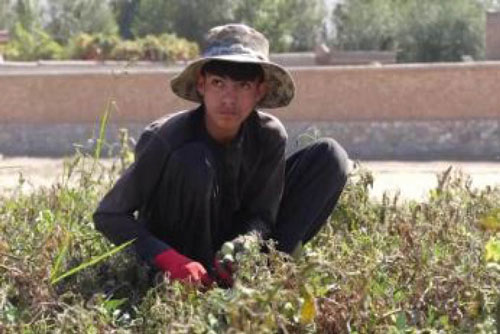Save The Children said that the summer floods in other areas of the country have destroyed 85,000 acres of crops and killed 7,500 livestock, further worsening the situation.
“The climate crisis poses a serious risk to all Afghan children whose families or communities survive on farming – nearly 13.2 million children — with current drought and unseasonal summer floods wiping out crops, killing livestock, drastically reducing vital food supplies and diminishing water sources,” the report reads.
Meanwhile, the International Rescue Committee (IRC) also in a report voiced concerns over food insecurity in Afghanistan, saying that almost 34 million Afghans, over half of the country’s population, face acute food insecurity.
Afghanistan has recently plunged into a dire humanitarian crisis.
“No one works in our home. Only I am working though I don’t make enough. There are a lot of economic problems,” said Ahmad, a child laborer.
“There are a lot of problems at home. I go to school at 10:00 in the morning and finish at 2:00 in the afternoon. Then I come here and work at this workshop,” said Ali Riza, a child laborer.
The economists said they believe that the lack of recognition for Afghanistan has posed serious economic challenges in the country.
“The political changes last year have severely affected the investment and the economy and has resulted in surge of unemployment this year that also caused an increase in poverty and food insecurity,” said Mir Shikib Mir.
“Afghanistan may be recognized by the world, so we can see the flow of international aid either in development or humanitarian parts as it was in 2007,” said Abdul Naseer Rishtia, an economist.
Earlier, the World Bank estimated Afghanistan’s GDP would contract between 30 to 35 percent in 2022.–tolonews










